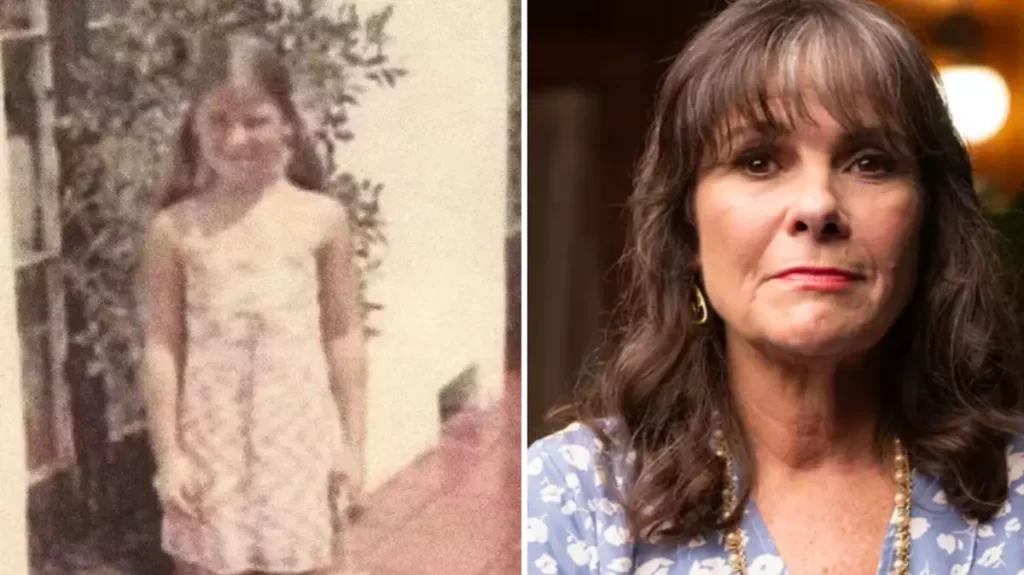Rodney Alcala, infamously known as “The Dating Game Killer,” was a charming yet sinister figure who terrorized the 1970s with his heinous crimes. Despite his appearance as a charismatic contestant on the popular TV show The Dating Game, Alcala led a double life as a brutal serial killer. His intelligence and ability to manipulate those around him made him particularly dangerous, leading to a horrifying trail of victims across the United States. Alcala’s story is a chilling reminder of how appearances can be deceiving, with his arrest and subsequent conviction exposing one of the most terrifying criminal minds of the 20th century.
Table of Contents
Rodney James Alcala’s Early Life: A Childhood Marred by Abandonment

Born Rodrigo Jacques Alcala-Buquor on August 23, 1943, in San Antonio, Texas, Rodney experienced the abandonment of his father at a young age, leaving his mother, Anna Maria Gutierrez, to raise him and his siblings alone. This early loss contributed to a sense of emotional insecurity and instability that would later manifest in his adult life.
The family relocated to Mexico and subsequently to Los Angeles, further disrupting his social and emotional development. These frequent moves hindered his ability to form stable relationships and establish a sense of belonging. These early experiences of displacement contributed to his later antisocial tendencies and difficulty forming meaningful connections with others.
While Rodney was reportedly a bright student, his academic achievements were overshadowed by emerging behavioral problems. These issues, coupled with his family’s socioeconomic struggles, further exacerbated his feelings of isolation and alienation.
His fascination with violence was a disturbing manifestation of his inner turmoil. He sought solace in violent narratives, blurring the lines between fantasy and reality. This unhealthy obsession fueled his desire for control and dominance, ultimately leading him down a path of escalating brutality.
He was reportedly a bright student but began displaying troubling behavior as a teenager. At 17, he joined the Army but was discharged a few years later after being diagnosed with antisocial personality disorder. The diagnosis further exacerbated Rodney’s proclivity for violence—impairing his ability to form genuine emotional connections, rendering him incapable of empathizing with the suffering of others. He viewed individuals as mere objects, pawns to be manipulated and exploited for his own gratification.
After leaving the Army, Rodney attended UCLA School of Fine Arts, where he earned a bachelor’s degree. Despite his artistic pursuits, he exhibited a darker side, displaying a disturbing fascination with violence and control, which manifested in his relationships with women. He frequently engaged in manipulative and abusive behavior, exploiting his charm and good looks to gain the trust of women. This pattern of behavior would later escalate into acts of extreme violence.
1968: A Turning Point, The Tali Shapiro Case
In 1968, a 25-year-old Rodney was then an aspiring photographer and UCLA student, committing his first documented violent crime. His victim was eight-year-old Tali Shapiro, a young girl on her way to school in Hollywood.
Rodney lured Tali into his car under the pretense of knowing her parents, taking her to his apartment, where he sexually assaulted and brutally beat her, leaving her for dead. A concerned citizen noticed Rodney’s suspicious behavior, alerting the authorities but, by the time the police arrived at his apartment, Tali was unconscious and barely alive. Miraculously, she survived the attack but suffered severe physical and emotional trauma—leaving a permanent scar on her life and the lives of her family.

Rodney, on the other hand, managed to evade capture, fleeing to New York and assuming a new identity. He embarked on a cross-country journey, leaving behind a trail of unanswered questions and a devastated community grappling with the aftermath of his heinous act. This horrific incident marked the beginning of Rodney’s known criminal activities, revealing his predatory nature and violent tendencies.
The 1971: Rodney Alcala’s Double Life

In 1971,Rodney james alcala embarked on a chilling double life. Using the alias “John Berger,” he enrolled in NYU film school, studying under the renowned director Roman Polanski. However, his aspirations as a filmmaker were a sinister facade for a far darker reality.
During his time in New York City, he continued his reign of terror, murdering Cornelia Crilley and Ellen Hover. He inflicted unimaginable suffering on his victims before ultimately taking their lives. Rodney’s crimes were a grotesque juxtaposition to his academic pursuits, a chilling reminder that darkness can lurk beneath even the most seemingly ordinary of exteriors.
Unbeknownst to his classmates and professors, Rodney was a predator hiding in plain sight. His enrollment at NYU, a prestigious institution of art and culture, served as a macabre irony, a testament to his ability to deceive and manipulate. The aspiring filmmaker, fueled by a twisted desire for control and suffering, used the vibrant city as his personal hunting ground, leaving a trail of devastation in his wake.
Methods of a Monster: Rodney Alcala’s Modus Operandi
Rodney’s crimes reflected his deep-seated psychological issues as he targeted vulnerable women, often luring them with a facade of charm and affection before unleashing his violent tendencies. He often presented himself as a successful photographer, using this guise to gain the trust of his victims. He would approach young women, often in vulnerable situations, and offer to take their photographs, promising to help them launch modeling careers.
Once he had established a rapport with his victims, he would isolate them, taking them to secluded locations or his own apartment for privacy and control. He would toy with his victims, beating or strangling them until they lost consciousness, only to repeat the process when they awoke before finally killing them.
His distorted perception of reality, a hallmark of his mental illness, allowed him to rationalize his actions and dehumanize his victims. He convinced himself that they deserved their fate, absolving himself of any guilt or responsibility. This warped sense of morality enabled him to continue his reign of terror, leaving a trail of devastation in his wake.
A Notorious Fugitive: Rodney Alcala’s Time on the FBI’s Most Wanted List
In 1971, three years after his disappearance following the Tali Shapiro assault, Rodney’s criminal activities caught the attention of the FBI. His inclusion on the agency’s Ten Most Wanted Fugitives list brought national notoriety to his case, intensifying the search for the elusive predator.
This heightened exposure ultimately led to his arrest in New Hampshire, where he had been working as a counselor at a summer arts camp under the alias “John Berger.” However, despite the FBI’s efforts, the prosecution faced significant challenges in building a strong case against him.
Tali Shapiro was traumatized by the incident, hesitant to testify against her attacker, hindering the prosecution’s ability to secure a conviction on the more serious charges related to the assault. Consequently, Rodney was only convicted on a lesser charge of child molestation and sentenced to a mere 34 months in prison.
This short sentence proved to be a missed opportunity to apprehend a dangerous criminal, having devastating consequences. He would go on to commit a series of heinous crimes in the years that followed.
A Failed Opportunity: Rodney Alcala’s Release and Subsequent Crimes
Following his short prison sentence for the assault on Tali Shapiro, Rodney was paroled in 1974 with minimal supervision. This decision would prove to be a grave error, as he quickly returned to his predatory ways.
Within months of his release, he was arrested again for assaulting a 13-year-old girl who had accepted a ride from him. This incident highlighted the alarming pattern of his behavior and the danger he posed to vulnerable young women. But due to a plea bargain, Rodney was only convicted on a lesser charge and served another short sentence.
Upon his second release in 1977, he moved to New York City, where he continued his reign of terror, preying on unsuspecting women. His time in New York City was marked by a series of disturbing incidents, including the disappearance of several young women. While no direct evidence linked him to these cases, the similarities between the victims and his modus operandi raised suspicions among investigators.
His ability to evade capture and continue his violent crimes after his initial release is a chilling reminder of the systemic failures that allowed a dangerous predator to roam free. The lack of adequate supervision and rehabilitation for convicted offenders, coupled with the challenges of prosecuting cases involving vulnerable victims, created a perfect storm that enabled him to continue his wave of terror.
The Dating Game: John Berger, The Winning Contestant

In 1978, the chilling duality of Rodney’s life took an even more sinister turn. Despite his ongoing murder spree, his charisma and charm allowed him to slip through the cracks of society and make an infamous appearance disguised as “John Berger” on the popular television show, The Dating Game.
Presented as a “successful photographer,” his facade of normalcy captivated the audience and the bachelorette, Cheryl Bradshaw. His wit and charm proved irresistible, and he ultimately won a date with her. However, after the show, she refused to go out with Rodney, finding him “creepy” and weird. The irony of a serial killer winning a televised date was a macabre twist that would later haunt the show and its viewers.
1979: The Robin Samsoe Tragedy
Perhaps the most heart-wrenching case linked to Rodney is the abduction and murder of 12-year-old Robin Samsoe in 1979. Robin was a bright and vivacious young girl from Huntington Beach, California, riding her bicycle to ballet class when Rodney approached her.

Known for his manipulative charm, he lured Robin away with promises of taking her picture. Tragically, this would be the last time she was seen alive. Her disappearance sparked a massive search, but her remains were not discovered until 12 days later in the Angeles National Forest.
Robin’s murder shocked the community and intensified the manhunt for Rodney. The case resonated deeply with the public due to her innocence and the brutal nature of the crime. Witnesses came forward, reporting a man matching Rodney’s description approaching Robin on the beach before her disappearance. This raised suspicions and placed Rodney firmly in the investigators’ crosshairs.
1979: The End of the Line – A Series of Events Leading to Alcala’s Final Arrest
A pivotal moment in the investigation occurred when Robin Samsoe’s earrings were discovered in a storage locker rented by Rodney. This tangible evidence directly linked him to the crime and intensified the scrutiny on him. A witness who had seen him interacting with Robin on the beach positively identified him from a photo lineup. This identification, coupled with the discovery of Robin’s earrings, provided compelling evidence of Rodney’s involvement in the murder.
Forensic analysis revealed a partial fingerprint match on Robin’s bicycle, further solidifying his connection to the crime. The accumulation of physical evidence, witness testimonies, and suspicious circumstances surrounding his interactions with Robin ultimately led to his arrest in July 1979.
Unmasking the Rodney Alcala Dating Game Killer: Capture, Conviction, and Death
Rodney Alcala, also known as “The Dating Game Killer,” is infamous not only for his gruesome crimes but also for his appearance on the popular television show The Dating Game in 1978. Following Rodney’s arrest in 1979, a series of trials and appeals unfolded, marking a twisted path to justice. He was convicted and sentenced to death multiple times, but his cunning legal maneuvering and appeals led to repeated overturns of the verdicts.
In the early 2000s, DNA evidence linked him to several unsolved murders in California, solidifying his status as a prolific serial killer. He was ultimately convicted in 2010 on five counts of first-degree murder, including the death of Robin Samsoe. The evidence against him was overwhelming, including photographs of victims found in his possession.
Rodney’s killing spree extended beyond California. In 2013, he pleaded guilty to two murders committed in New York in the 1970s. The case had remained cold for decades until DNA evidence connected him to the crimes.
Despite numerous appeals and delays, Rodney remained on death row in California until he died of natural causes in 2021 at a hospital near Corcoran State Prison at 77 years old. His passing marked the end of a long and arduous legal battle, bringing a sense of closure to the families of his victims.

Rodney Alcala is considered one of the most prolific serial killers in American history. The exact number of his victims is unknown, but it’s estimated to be between 50 and 130.
Rodney Alcala: Blinded by Dark Charm
The case of Rodney Alcala highlights the dangers of being blinded by dark charm. It’s a chilling reminder that appearances can be deceiving, and even the most charismatic individuals can harbor dark secrets.
Rodney Alcala’s life serves as a chilling reminder of the devastating consequences that can arise when mental illness is left untreated. The complex interplay of psychological factors, coupled with a lack of intervention, ultimately led him down a path of unspeakable violence.
Television Interviews & Revelations
2021 Interview on 20/20: Rodney Alcala Episode
In 2021, the television newsmagazine 20/20 aired a special episode titled “The Dating Game Killer,” which delved into the disturbing case of Rodney Alcala, a serial killer who appeared on the popular dating show The Dating Game during his murder spree.
The episode featured a chilling interview with Rodney himself, conducted from his prison cell shortly before his death. During the interview, he maintained an eerie calm and detachment as he discussed his crimes, offering glimpses into his twisted psyche.
Key Revelations:
- No Remorse: Rodney showed no remorse for his actions, stating that he had “no regrets” and that he considered his victims “disposable.”
- Manipulative Nature: He demonstrated a manipulative and self-serving personality, attempting to control the narrative and deflect blame for his crimes.
- Haunting Insights: Rodney provided chilling insights into his modus operandi, describing how he selected victims and the methods he used to lure them into his grasp.
- Unyielding Denial: Despite overwhelming evidence, he continued to deny his guilt, claiming that he was wrongly convicted.
- Unanswered Questions: The interview left many questions unanswered, including the full extent of his crimes and the motivations behind his horrific acts.
The 20/20 episode shed new light on the disturbing case of Rodney Alcala and the dangers of a seemingly charming and charismatic individual who harbored a dark secret. It served as a reminder of the importance of vigilance and the need to trust our instincts when encountering potentially dangerous individuals.
The interview with Rodney himself provided a chilling and unforgettable glimpse into the mind of a serial killer, leaving viewers with a lasting impression of the darkness that can exist within seemingly ordinary people. While it may not have provided all the answers, it offered a valuable contribution to understanding the complex and disturbing nature of evil.
People Magazine Investigates: Surviving a Serial Killer – Stories of Resilience and Triumph
“People Magazine Investigates: Surviving a Serial Killer” is a documentary series that delves into the chilling stories of individuals who narrowly escaped the clutches of some of the most notorious serial killers in history. The premiere episode focuses on the case of Rodney Alcala, known as the “Dating Game Killer” due to his appearance on the popular TV show in the midst of his murder spree.

The episode recounts the harrowing experiences of survivors who encountered Rodney, including Tali Shapiro, who was attacked by him at the age of eight, and Cheryl Bradshaw, who chose him as her date on “The Dating Game” but ultimately decided not to go out with him after sensing something unsettling about him.
The documentary also explores the investigation and capture of Rodney, highlighting the challenges faced by law enforcement in apprehending a cunning and elusive predator. It features interviews with investigators, family members of victims, and experts who provide insights into Rodney’s psyche and the factors that contributed to his crimes.
Through powerful storytelling and compelling interviews, “People Magazine Investigates: Surviving a Serial Killer” sheds light on the resilience and strength of survivors who have overcome unimaginable trauma. It also serves as a stark reminder of the dangers lurking in our society and the importance of vigilance and awareness.
Similar ” Serial killers”
- John Wayne Gacy: Pogo the Killer Clown
- Richard Speck: The Chicago Mass Nurse Killer
- Cleveland Torso Murderer: Infamous Serial Killer
- Pedro López: The Monster of the Andes
Watch “Dating Death”

“Dating Death” explores the chilling story of Rodney Alcala, a serial killer who managed to charm his way onto “The Dating Game” while actively committing heinous crimes.
Read “THE KILLING GAME: The True Story Of Rodney Alcala”

Alan R. Warren’s “THE KILLING GAME” delves into the chilling details of Rodney Alcala’s crimes and the prolonged legal battles that followed, revealing a case that continues to haunt and intrigue.
FAQs
Why is Rodney Alcala called “The Dating Game Killer”?
Rodney Alcala earned the nickname “The Dating Game Killer” because he appeared on the popular TV show The Dating Game in 1978, during which he was actively committing murders. Despite his criminal background, he won the game, but the chosen contestant declined to go on a date with him.
How many people did Rodney Alcala kill?
Rodney Alcala was convicted of killing seven people, but investigators believe the actual number of his victims could be much higher, possibly over 100.
What happened during Rodney Alcala’s appearance on The Dating Game?
On The Dating Game, Rodney Alcala presented himself as a charming and witty bachelor. He won the game, but the woman who selected him decided not to go on a date with him due to a “bad feeling” she had after the show.
What impact did Rodney Alcala’s case have on public awareness?
Rodney Alcala’s case shocked the nation and brought attention to the fact that dangerous individuals can sometimes blend into society without detection. His case is often cited in discussions about the importance of thorough background checks.
Where can I learn more about Rodney Alcala and his crimes?
You can read more about Rodney Alcala in true crime books, documentaries, and online articles that detail his life, crimes, and the investigations that led to his capture.